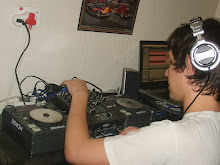In this post I will give a short overview of what I believe to be the definitions for the terms Open, Education and Resource in the context of this module.
In my readings I have come to understand that the term "open" has a lot of sides to it. For me, in my context, it boils down to two major aspects that influence the degree of openness; namely technical characteristics and social characteristics.
In the first instance, technical constraints such as inter-operability of networks, uncompatible formats of documents and unavailability of technical specifications will limit the degree of openness. I've found that in our South African context the state of our hardware availability (eg. computer access and slow bandwidth) also play a role in the openness of content. For example, slow bandwidth will prohibit a student from watching a video. For all intensive purposes the video will be posted by its creator to be open and freely available to everyone accross the globe, but due to technical constraints it will not be available to some who live in countries like ours.
In the second instance, social characteristics, refers to the limitations that society has placed on the content. There may be various copyright laws placed on reproduction of the content. As I learned from the video of David Wiley there are numerous variants of the constraints placed on "open" content as well. Ultimately for something to be classified as truly open it must also be free. These types of content or works, according to Hill and Möller, allow users the freedom to study the works and apply knowledge gained from it, redistribute copies (in whole or parts)and to make improvements and release the new copies.
The term Educational in OER is at this stage problematic for me. As argued in the readings, is only content generated in educational settings like schools and universities educational resources or is any content no matter its origin a educational resource if someone learns something from it? I am confident that I will have a better understanding of this as the course progress.
The term resource is less problematic at this stage. Any material that a person draws on for whatever reason can be classified as a resource. Therefore we can group photos, documents, videos, sound files, networks and the like together under the communal banner of resources.
I hope I made sense in this post and please comment if you disagree or have anything to add.
Have a lovely weekend!
Schalk
Subscribe to:
Post Comments (Atom)

Low bandwidth is a problem in our area too. The college has broadband service and living across the street, we get it at home too. Single optical trunk lines run to the reserves and smaller communities but all in-between is dial-up (dead slow) or satellite (intermittent).
ReplyDeleteSomewhat ironically the school just hired a new media production expert to enrich the content on our offerings which will push many courses into functioning only on high bandwidth, direct fibre connections. The only locally available connections needed to access this high horsepower content are in the college library portals and a few private businesses in town. So we now produce distance content that can only be accessed by coming to school. (And sitting in the library just on the other side of the computer lab wall where we create the distance product).
Why would this be done? Why make the courses less accessible by tarting them up? To make the “products” (courses) more marketable for outside sales to finance more equipment to create ever more complex products to sell. Of course this wasn’t the intention. The intention was to create learning opportunities for everyone in our sparsely populated corner of the world on an as-requested basis. Stand alone courses need only an outlet to present, thus opening them to small-cohort continuous-intake delivery.
As I understand software development, over the last few years the idea of elegantly compact, low-bandwidth code has been dropped in favour of sloppy code piled on top of older code all pushed by increased speed in processors. This is clearly a dead end energy waster and it would be interesting to see if anyone is working on this problem.
It’s really too bad program developers are given the best and fastest equipment to create with. All we seem to end up with is flashy stuff like exotic backgrounds on Power Point cards that quadruple byte load without contributing anything to the meaning of the text. Maybe we should change this to “more medium = less message?”
Like your comments on the term Educational. Hate to categorize that way. Do we mean purposely made content intended to teach a specific skill, theory, formula or concept, etc? This seems to limit educational content to the intentions of the creator. What of content used, adapted or simply contributory to the learner acquiring skills, theories, ideas or understanding? Seems like education is a sharing process and not just the exclusive property of the teacher.
Scott
The more I think about this topic the more confused I am about why the term "educational" is really that important. Was there an explanation in any of the readings or video about why it is important to define that word? Is it a funding issue maybe?
ReplyDeleteWhat are your thoughts or remembrances about this Schalk. So far we all seem to be saying the same thing about education.
Gillian